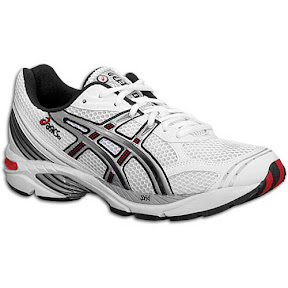Footwear for the Trail
Backpacking in running shoes might seem like an odd idea. It certainly was for me when I first considered it. Ray Jardine promoted the idea that if one carries a light enough load, then the extra weight, bulk and support offered by traditional hiking boots is unnecessary. He calculated that over the course of a long day hiking, every ounce removed from the feet is equal to 6 pounds on the back. Ray's argument was persuasive enough to get me to try it, and I'm convinced I'll never go back.
The benefits continue beyond weight, since on a long hike, your feet WILL get wet. With boots, the moisture stays inside, even more dramatically with waterproof ones. Running shoes allow the moisture to escape immediately and can dry overnight or while being worn.
Until last night, we were unsure of which shoes we'll start with, but now this question has been resolved. Eastbay offers a good selection of shoes at reasonable prices and we outfitted ourselves with these ones last night. Somewhat disturbingly, out of their entire inventory, Lauren and I independently settled on the same brand and model (Asics Gel-1110) based on our criteria below.
- Lightweight (less than 11oz for one shoe)
- Breathable (lots of mesh)
- Little or no motion control (not relevant when going off-road)
- Inexpensive (we'll need 3-5 pairs each)
- Style (not sure how we did on this one, but they'll be muddy soon enough!)


One of the trade offs with lightweight running shoes is that they will most certainly wear out. We expect they may last about 500-700 miles, which would put us somewhere past Damascus, VA. These pairs cost us $49 each, so we expect to be able to finish the trail at around $250-300 if we go through 5 pairs. We'll probably get by with less, but either way, we're spending about the same amount as a "good pair" of traditional boots, but are traveling with significantly more comfort and ease.
No comments:
Post a Comment